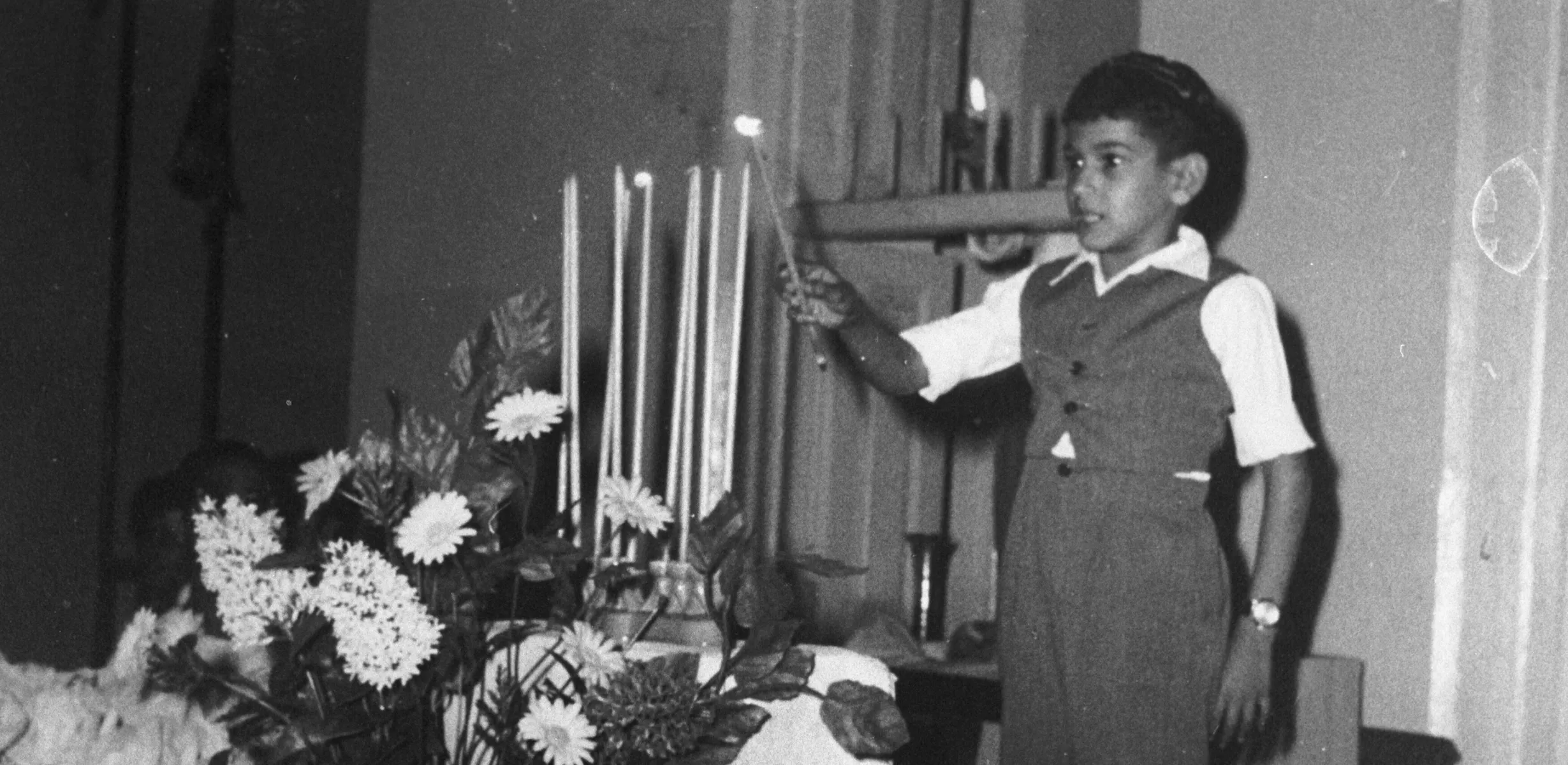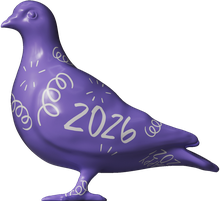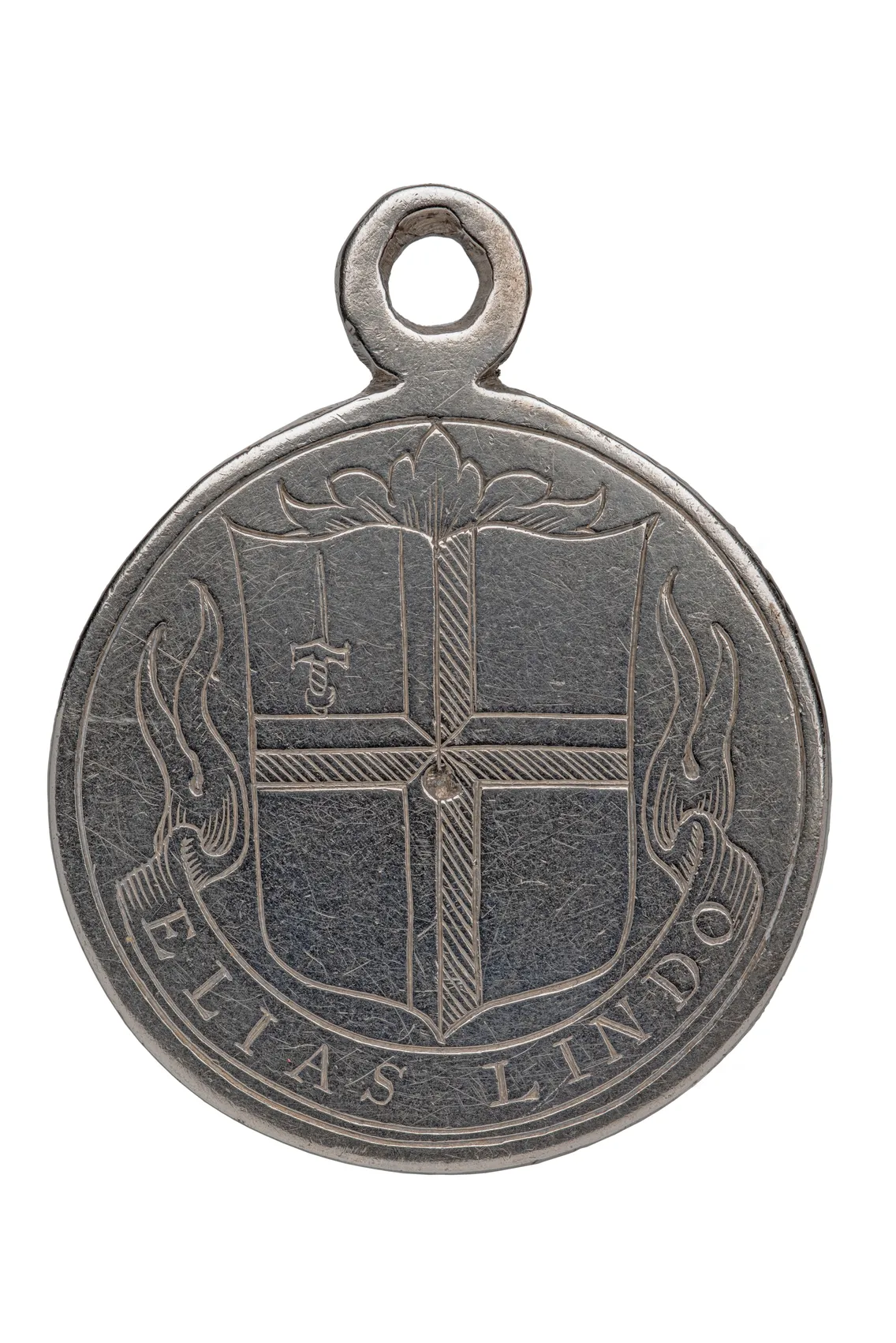12 December 2022 — By Hazel Forsyth, Adam Corsini
What connects Elias Lindo & the Hanukkah lamp?
From being the proud owner of the oldest known Hanukkah lamp made in Britain to being one of the first ‘official’ Jewish brokers to trade in London City, we find out more about Elias Lindo.

A boy lighting a candle at a Hanukkah party in Aden during the 1950s or 1960s.
Chanukah, Hanukah, Hanukkah or Chanukkah? The Jewish festival of lights can be spelt numerous ways depending on whether you’re Ashkenazi, Sephardi, stick to a traditional Hebrew pronunciation, or prefer a more anglicised sound. Truth is, it doesn’t matter how you spell it, it’s a wonderful festival that is one of the more well known in the Jewish calendar.
What is Hanukkah?
Hanukkah lasts for eight days, starting on the 25th day of Kislev in the Hebrew calendar, which could fall anytime from November-end to December-end. This year, it starts on 7 December 2023 and runs through to the 15th. Hanukkah in Hebrew means “dedication”, referring to the rededication of the Holy Temple in Jerusalem. In the 2nd century BCE, the rulers at the time were the Seleucids (Syrian-Greeks), who tried to force the people of Israel to accept Greek culture and beliefs instead of observing mitzvah (commandment) and their own G‑d. A small group of Jews, led by Judah the Maccabee, drove the Greeks from the land before reclaiming the Temple rededicating it to the service of G‑d.
When the Maccabees tried to light the Temple’s Menorah (the seven-branched candelabrum), all they had available was a single day’s supply of olive oil. Despite this, the menorah stayed alight for eight days, hence, the traditions of Hanukkah! On each night of Hanukkah, Jews light candles or oil with the number of lights lit representing the day of the festival – one light on the first night, two on the second, and so on. The lights are lit using a shamash, a helper candle, which is why there are nine holders on a hanukkiah (or a Hanukkah lamp) instead of the seven holders of a Menorah.
Within the Jewish Museum London’s collection are over 100 hanukkiah, ranging from wooden ones, to one made from a recycled First World War shell case with the Hebrew inscription, “An everlasting souvenir for the High Commissioner of the Land of Israel, Eliezer ben Menahem, whom God protect. In his days may Judah and Israel be saved. Amen.” Eliezer ben Menahem is the Hebrew name of Lord Herbert Louis Samuel.
But, the oldest in the collection – indeed the oldest known hanukkiah made in Britain – is the Lindo Lamp.
The Lindo lamp

This hanukkiah is thought to be the oldest known Hanukkah lamp made in Britain, back in 1709.
This hanukkiah dates to 1709 and gets its name from its owners, the Lindo family. It was originally a wedding gift to Elias Lindo when he married Rachel Lopes Ferreira. The wedding likely took place at Bevis Marks synagogue, the oldest synagogue of continuous worship in the UK, which opened in 1701 and is still active today. The lamp was designed especially for Elias by the silversmith John Ruslen, who chose to depict Elijah the prophet and the ravens in reference to Elias’ Hebrew name. Although an uncommon subject for Jewish ceremonial art, the Sephardi community, as the Lindos were, tend to depict the scene related to the name of the object’s owner on especially meaningful items.
But who exactly was Elias Lindo?

The Bevis Marks synagogue in London; interior by Isaac Mendes Belisario, 1817.
Elias Lindo – sworn broker
Elizabeth I opened the Royal Exchange in Cornhill, in 1571. It was London’s first trading bourse – “Great Britain’s Glory”, and the City’s pride – where merchants and tradesmen, “as well English as strangers [sic], for their general making of bargains, contracts and commerce” could congregate.
The building was designed for trade, with a cloistered quadrangle open to the sky and, on each side, two floors or galleries of specialist shops and walks. Twice a day brokers and merchants met together – from 11 to 12 in the morning, and from 5 to 6 in the evening.
Each nation had its own quarter, though the dealers were free to move from station to station in the interests of trade.

Elias Lindo’s Coat of Arms.
In 1697, the Royal Exchange was the place of business of the merchant broker, Elias (Eliyahu de Isaac). Elias, like his father before him, who had escaped the Spanish Inquisition and had fled to London in 1670, was one of the “Jew Brokers” of the City, a role held by his descendants until the registration of sworn brokers was abolished in 1886.
The office of broker was an ancient one and initially referred to those who provided support to “decayed citizens and merchants who by great losses have been disabled to pursue their trade”. By the late-17th century, however, Sworn Brokers were those who were officially licensed to trade in all commodities as long as they upheld the City’s commercial rules and regulations. Candidates for the office had to produce testimonials to support their application.

After the first Royal Exchange building burnt down in the Great Fire of 1666, the second Royal Exchange in Cornhill was designed by Edward Jarman and opened in 1669. It burnt down in 1838. Bartolozzi, 1760.
In 1697, the City’s jurisdiction over Sworn Brokers was tightened and to ensure that all trading groups were represented, 100 brokers, including 12 “alien” brokers and 12 “Jew Brokers” were appointed. Seventeen Jewish brokers had been licenced before 1691, but Elias was one of the 12 new Sworn Brokers to take office in 1697, which required an oath and an annual fee of 40 shillings. The brokers’ names and addresses were printed and exhibited at the Guildhall and the Royal Exchange.
The Sworn Brokers were each issued with a newly minted silver medal depicting the Royal Arms of William III (used from 1697 to 1702), surrounded by the Garter for The Most Noble Order of the Garter, surmounted by a crown, flanked by the legend “W3 [William III] R [Rex]”.
This medal (in London Museum’s collection) is a rare survival. It the only known surviving example issued under the 1697 Act revising the terms and conditions of the Sworn Brokers. Descendants of Elias Lindo donated the medal to London Museum in 1931.
From the 17th century onwards, following the readmission of Jews into Britain in 1656, Jewish individuals have played a part in trade and commerce. Some held prestigious positions such as Elias Lindo, others at the other end of society contributed as street peddlers. The 18th and 19th centuries saw wealthy Jewish families become known for their business acumen and philanthropy. With the great migration to the East End of London in the late 19th–early 20th centuries, the Jewish community brought their own skillsets to establish furniture-making companies, millineries, bakeries and a vast industry of tailoring companies, employing thousands. Regardless of their position in society, faith was the thread that connected them all and Hanukkah is a time for communities to unite and celebrate. Whether lighting a bespoke hanukkiah like the Lindo Lamp, or a modern take on a hanukkiah, we wish you a very happy Hanukkah.
Adam Corsini is Senior Collections Engagement Manager at the Jewish Museum London, and Hazel Forsyth is Senior Curator, Post Medieval at London Museum. Both the Jewish Museum London and London Museum have many more related objects in our collections, so please get in touch or visit to know more.
This partnership was supported using public funding from Arts Council England.







